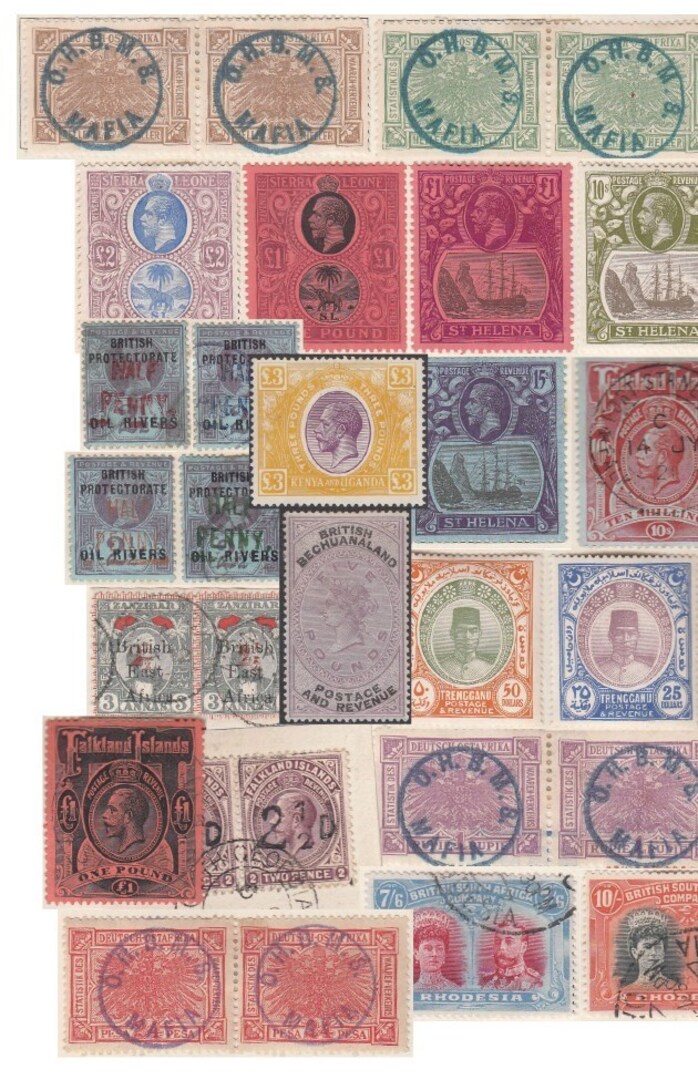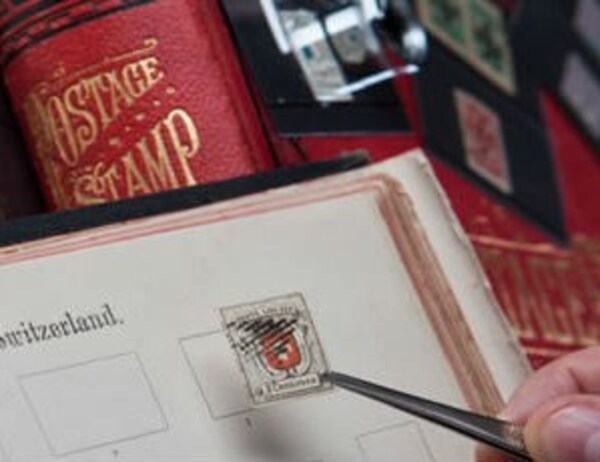Sometimes discovering philatelic errors is easy, particularly when examples have been identified and are accurately described.
This is not always the case and many hours can be spent searching philatelic material to find that illusive mistake. Such items are keenly sought by collectors who need to satisfy a unique personal desire.
Whilst recently standing in a queue waiting to be admitted to Queens Tennis Club in London an ardent collector friend was browsing a stamp magazine. He became engrossed with the story of an Australian 1914 1d carmine-red with a newly discovered watermark variety. This stamp with its sideways watermark error had been purchased only last year as part of a larger group. So immersed in learning more about the fascinating details my friend failed to notice a large black limousine that had pulled up alongside. The passenger who emerged was a former celebrity chat show host who strode confidently towards the main entrance brandishing his red Member’s Enclosure card; whilst now reduced to advertising funeral plans on television at the same time giving away free ball point pens he seemed to relish the recognition and attention given to him. My pal had become far too distracted to notice. The sideways watermark on the stamp is considered to be unique. So rare that the stamp is expected to sell for an amount in excess of £60,000.00 when offered for sale later this year.
But why do we find printers mistakes so alluring? It was around the turn of the last Century that the so-called “French Method” of collecting became fashionable, no longer did the best collections simply aspire to total completion but the proofs, drawings, subtle colour changes, plate alterations & damage, and all the other fascinating stuff that makes our hobby so interesting became de rigueur in the highest collecting circles, but errors were already popular long before then...
THE RAREST ERROR is widely considered to be the world second most valuable stamp. The Swedish 1855 3 skilling-banco printed in yellow instead of the correct green colour. It was discovered in 1885 by a Stockholm stamp dealer who bought the stamp from an unsuspecting schoolboy. The stamp has been shrouded in controversy but it has been a famous error for over 100 years and it is generally accepted that a single 3sk cliché had found its way into a printing of the 8sk orange- yellow. Back in those early days of stamp production anything was possible!
DIFFERENT TYPES OF ERRORS exist, mistakes made by the printer are the most dramatic, perhaps the most well- known of these is the American so-called “INVERTED JENNY” stamp. The United States issued a set of Air Post stamps in 1918, the top value was a splendid 24c depicting a Curtiss Jenny biplane in blue within a red frame. The day after issue a stamp collector, Mr William T. Robey visited his local post office to purchase a sheet each of these first airmail stamps. He didn’t like the centering of the sheets available so at the suggestion of the clerk he returned later that day and was amazed to find a complete sheet of 100 24c values with the plane upside- down!
This discovery, perhaps more than any other in philately convinced collectors to carefully check newly issued stamps for printing errors! A block of four from this sheet is currently the most valuable philatelic item.
DESIGN ERRORS CAN BE FUN (AND DANGEROUS) as they are often mass- produced the mistake can be available to thousands of collectors, a typical example would be the Monaco 1947 Air Post stamps depicting President Roosevelt inspecting his stamp collection – look closely and you will see he has been given SIX fingers by the engraver! Sometimes design errors can be a lot more serious, for example the Peoples Republic of China issued, during the height of the Cultural Revolution an 8f stamp known as “the Whole Country is Red” depicting workers with a map of China coloured red – however Taiwan was left in white, a terrible mistake (albeit accurate as the Communists never controlled the island). The stamp was withdrawn after 2 days and is a renowned rarity. There is no record of what befell the hapless designer...
During the 1960s many other countries saw exciting (and less dangerous!) new concepts in stamp production with modern multi coloured artistic designs. Printing errors occurred and many collectors specialise in locating examples from this period including missing colours & and incorrect values (to name just a couple). The choice is virtually endless. Perhaps one of the most infamous errors from that period would be the Falkland Island 1964 6d stamp depicting HMS “Glasgow” instead of HMS “Kent”. Examples of the error are extremely rare with only seventeen known to exist. The committed collector will still seek to find number eighteen!
Collectors follow their desires. Psychologists have identified a need in many of us to acquire and collect. Philatelic errors probably fulfil those who may possess that particular gene! This could be just one of the many reasons why stamp collectors like errors but there must be many other reasons. Compulsive collectors cannot bear distractions, just as my friend focused on the details of the Australian discovery, they are immersed in their subject and driven by the need to accumulate and acquire. Philatelic errors offer just such an opportunity. Human nature relishes and thrives on the search, the hunt, the hope of finding something unique, the use of the “sharp eye” and discovering the unexpected. This alone makes the subject more exciting, dramatic and also challenges the dull image that is often associated with stamp collecting!


 General
General
 General
General
 General
General